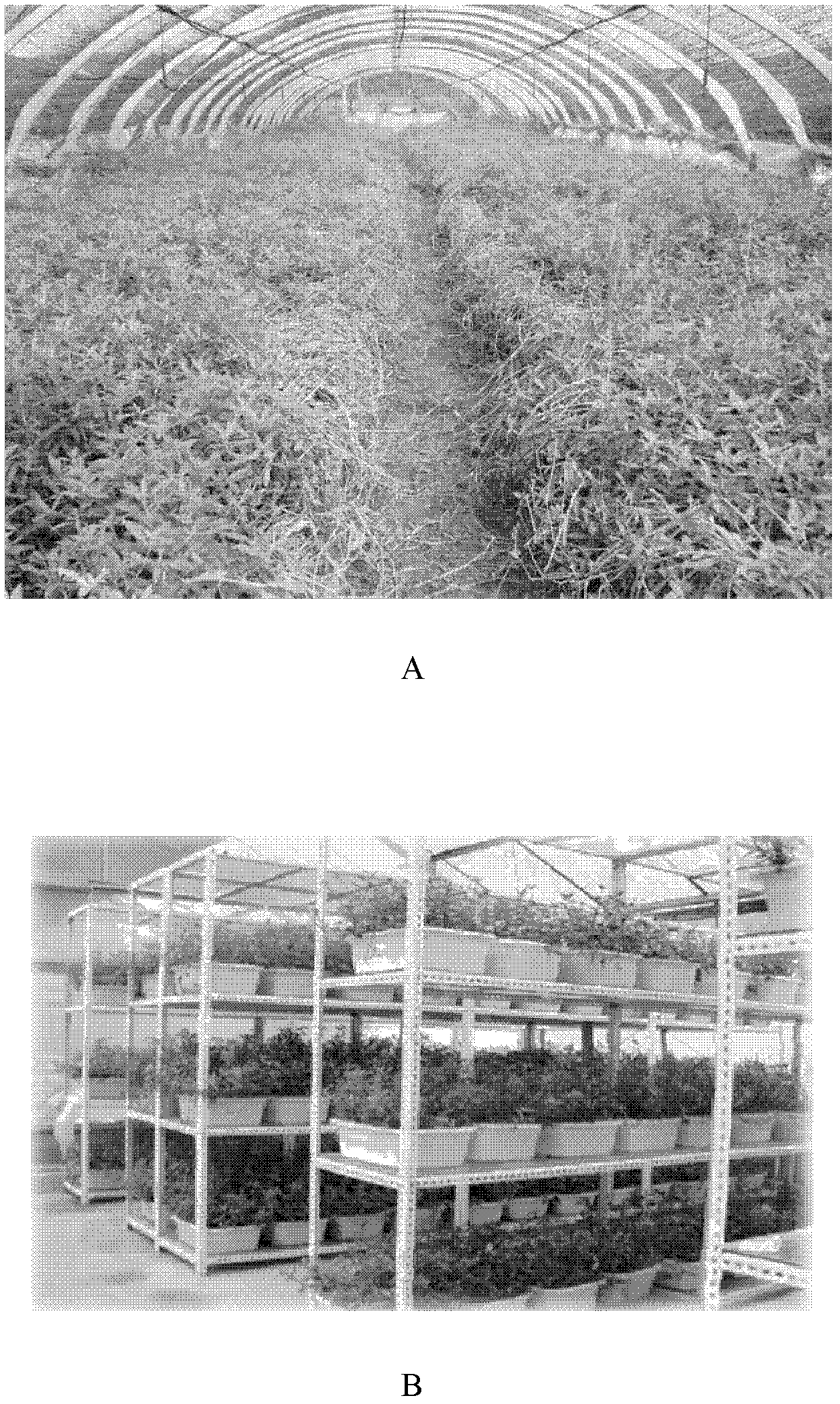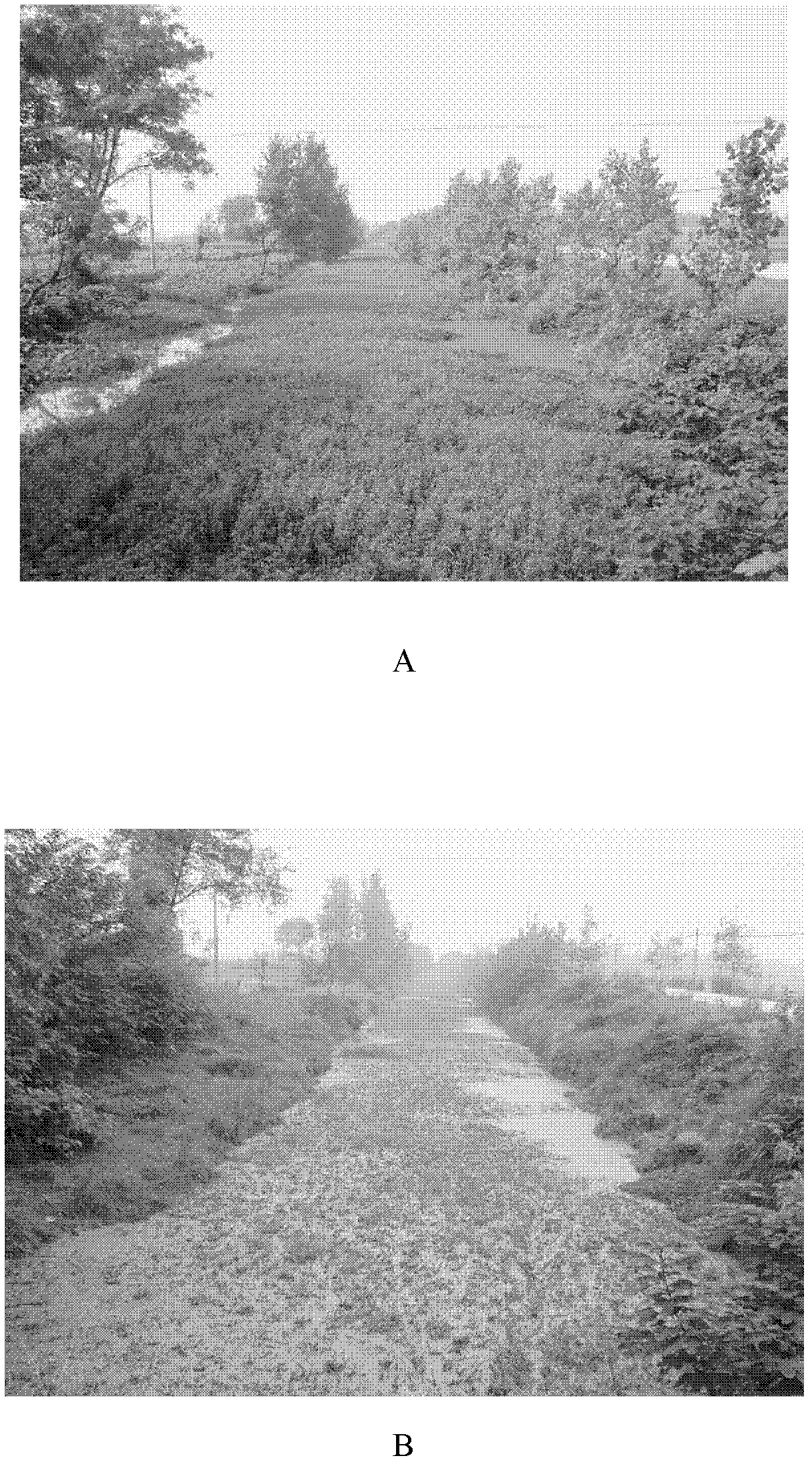Artificial mass raising method for agasicles hygrophila
A large-scale technology, applied in animal husbandry and other directions, can solve problems such as reducing output, and achieve the effects of low price, low feeding cost and huge economic benefits.
- Summary
- Abstract
- Description
- Claims
- Application Information
AI Technical Summary
Problems solved by technology
Method used
Image
Examples
Embodiment 1
[0054] Embodiment 1 Morphological characteristics and living habits of A. chinensis
[0055] 1. The morphological characteristics of the chrysoplasty:
[0056] [Adult] The whole body is painted black, and there is a "U"-shaped yellow stripe on each elytra. The body length of the female adult is 7.0mm, and that of the male adult is 5.7mm. Antennae whip-like, 11 segments, 1 / 3 of body length. The ventral surface of the female is flat, and the two abdominal segments at the end are exposed outside the elytra; the abdomen of the male is covered by the elytra, and an external genitalia is hidden in an oval recess at the end of the ventral surface.
[0057] [Eggs] Pale yellow, long cylindrical shape, 1.25mm long, 0.38mm wide, formed into egg masses, about 12-54 eggs per piece, 32 eggs on average. Arrange two columns in the shape of "eight".
[0058] [Larvae] The larvae are 3 instars in length and cylindrical in shape. The widths of their heads and shells are 0.25mm, 0.50mm, and 0....
Embodiment 2
[0080] The non-winter season artificial large-scale raising of embodiment Erliancao Anthosteraster
[0081] (1) The basic facilities for the non-winter season of A. chinensis
[0082] The support of the greenhouse can be built with steel pipes, wood, bamboo or cement, and the size can be designed and constructed according to the terrain. The size of the standard greenhouse is 8m×30m (240m 2 ); the top is covered with plastic film for heat preservation and moisture retention, and 30-40 mesh insect-proof nets are used on the side to improve the ventilation effect ( figure 1A). The soil type is not limited, the fertilizer is moderate, and it has a certain degree of porosity and good water retention performance. The greenhouse is divided into 2 columns longitudinally, with a 1m-wide channel left in the middle; multiple soil beds with a height of about 5-8 cm are horizontally formed on each side, and the distance between the soil beds is 50-60 cm. Where conditions permit, a spri...
Embodiment 3
[0101] The artificial large-scale raising of winter of embodiment Sanliancao Asteroptera
[0102] (1) Basic facilities for winter rearing of A. chinensis
[0103] The winter feeding room is mainly used for raising A. chinensis in winter (from late November to early March of the following year). The area depends on the scale of breeding, usually 3 rooms are needed, which are used as clean seedling room, adult oviposition room and larvae rearing room respectively. 10-20m per room 2 , Indoor temperature adjustment adopts air conditioner or oil heater, humidity adjustment adopts air humidifier, and exhaust fan is installed for ventilation.
[0104] In the breeding room in winter, set up several insect racks with a size of 150cm×50cm×195cm. The insect racks are made of metal angle steel. Each insect rack is divided into 2 layers, and the bottom is padded with thicker glass. The board is used to store potted seedlings, and 6 fluorescent lamps with a specification of 36W are insta...
PUM
 Login to View More
Login to View More Abstract
Description
Claims
Application Information
 Login to View More
Login to View More - R&D
- Intellectual Property
- Life Sciences
- Materials
- Tech Scout
- Unparalleled Data Quality
- Higher Quality Content
- 60% Fewer Hallucinations
Browse by: Latest US Patents, China's latest patents, Technical Efficacy Thesaurus, Application Domain, Technology Topic, Popular Technical Reports.
© 2025 PatSnap. All rights reserved.Legal|Privacy policy|Modern Slavery Act Transparency Statement|Sitemap|About US| Contact US: help@patsnap.com



